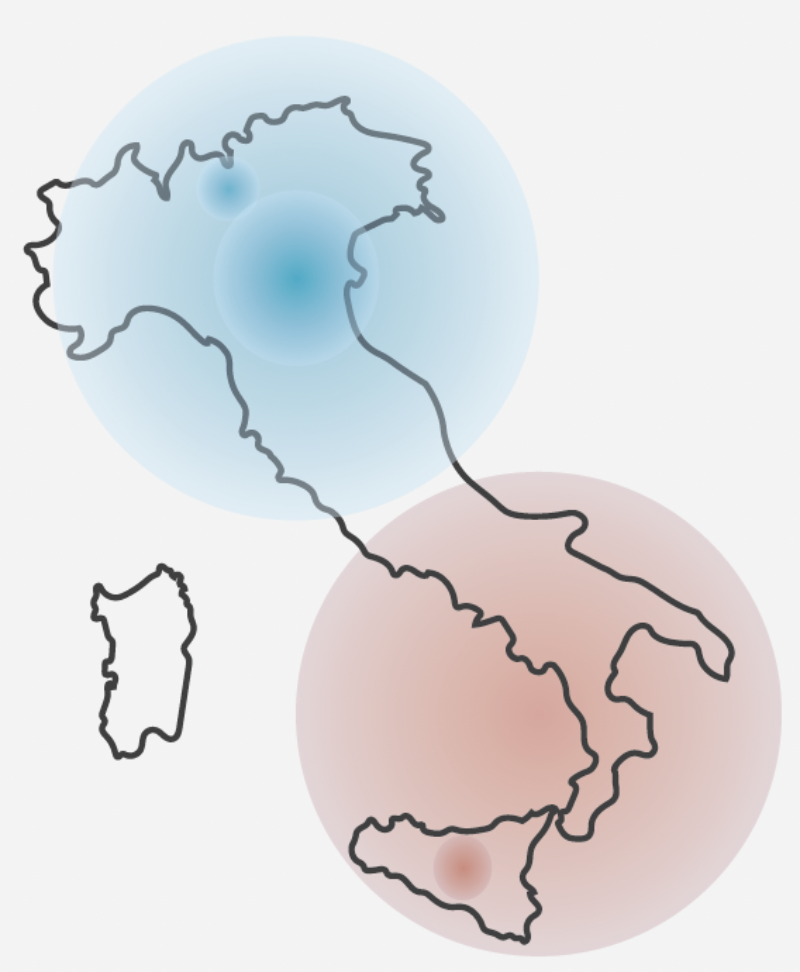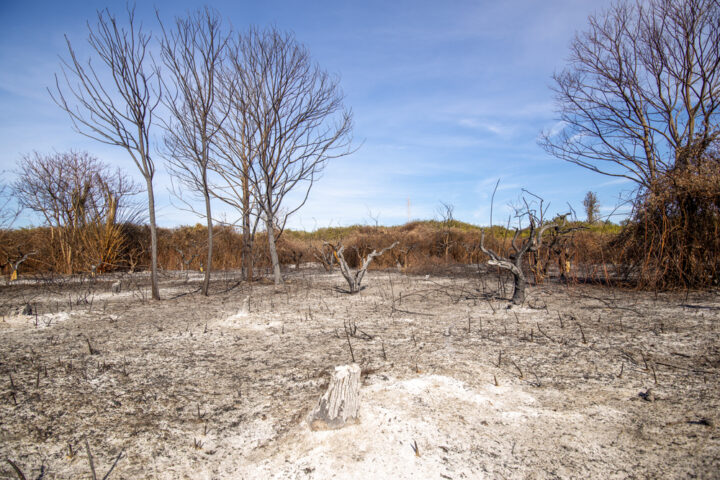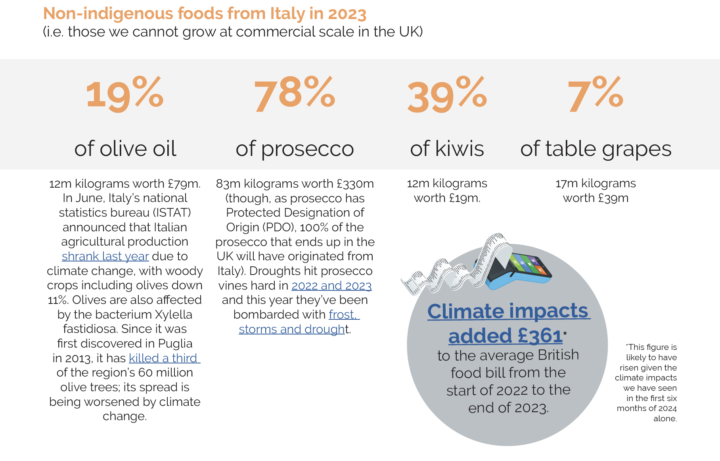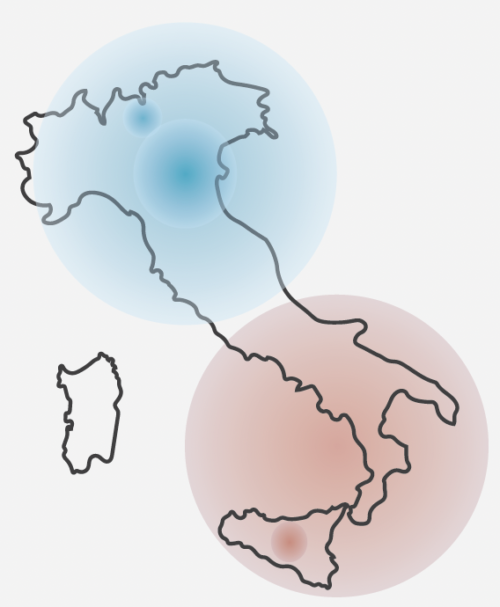Italy: climate impacts in focus
How is extreme weather impacting food, health and tourism in the third most-visited destination by British tourists?
Last updated:
Northern Italy has been experiencing storms and flash floods.
In May, the BBC reported that Milan received 130mm (5in) of localised rain in a single day, while a freight train was overturned by winds of up to 200kmph (120 mph) in Borgo Mantovano, Lombardy.
Climate impacts added £361to the average British food bill from the start of 2022 to the end of 2023. This figure is likely to have risen given the climate impacts we have seen in the first six months of 2024 alone.
Extreme weather means farmers cannot grow crops as normal, but fresh fruit and vegetables are essential for healthy diets. Price increases will hit the poorest families hardest, putting children at risk of malnutrition.


Southern Italy is experiencing its third consecutive year of drought.
July 2024’s heatwave in Italy and five other Mediterranean countries, coming after more than a year of new record high temperatures globally in each of the 13 preceding months, would have been virtually impossible without human-driven climate change.
Nowhere is this more evident than Sicily. In 2021, it European heat record of 48.8°C, in 2023 it hit 47.8°C. This year, conditions have become so bad that the Italian government declared an emergency in May and provided aid, though many say it is not nearly enough.
Lake Pergusa – the island’s only natural lake – dried up in July, with huge consequences for biodiversity.

Food


Europe is warming at twice the global average since 1991, and Southern Italy experiencing its 3rd consecutive year of drought.
Suffering there, and UK food security affected https://bit.ly/3ZJpS8P
